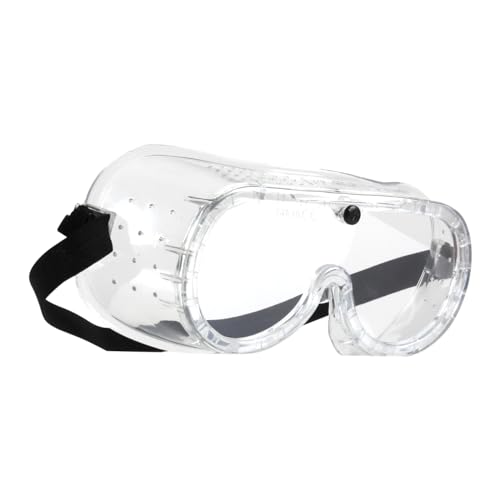Yes, safety goggles are necessary for woodworking
Woodworking can be an enjoyable and fulfilling hobby or profession, but it also carries inherent risks. One of the most important precautions that all woodworkers should take is wearing safety goggles. Safety goggles provide essential eye protection and can prevent serious injuries. Whether you are a beginner or an experienced woodworker, wearing safety goggles should be a non-negotiable part of your woodworking routine.
Protecting your eyes from flying debris
Woodworking involves the use of various tools and machines, such as saws, drills, and sanders. These tools generate high-speed projectiles and debris that can cause serious eye injuries if they come into contact with your eyes. Safety goggles are designed to provide a barrier and prevent any foreign objects from entering your eyes. They have impact-resistant lenses and offer wraparound coverage to ensure full protection.
Without safety goggles, sawdust, wood chips, and splinters can easily find their way into your eyes, causing irritation, scratches, or even more serious damage. It only takes a split second for a small particle to cause permanent harm, and wearing safety goggles is a simple yet effective way to prevent this from happening.
Shielding your eyes from chemical hazards
In addition to preventing physical injuries from debris, safety goggles also provide protection against chemical hazards that may be present in the woodworking environment. Many woodworkers use adhesives, paints, stains, and finishing products that contain chemicals that can be harmful to the eyes. These chemicals can cause irritation, burns, or even blindness if they come into contact with unprotected eyes.
Safety goggles with appropriate lens coatings can provide a barrier against chemical splashes, fumes, and vapors, minimizing the risk of eye injuries. It is important to choose safety goggles that are specifically designed to resist chemical hazards and provide adequate ventilation to prevent fogging.
Preventing long-term eye damage
Woodworking activities often involve repetitive motions, such as sanding or chiseling, which can generate fine dust particles. These particles may not initially cause noticeable harm, but over time, they can accumulate and lead to long-term eye damage or respiratory problems. Safety goggles can help prevent the entry of dust particles into your eyes and reduce the risk of developing conditions such as irritation, dryness, or infections.
Moreover, certain types of wood may release toxic substances or allergens that can irritate or cause allergic reactions to the eyes. Safety goggles serve as a barrier to prevent direct contact with these substances, providing an added layer of protection for your eyes.
Creating a safety-conscious woodworking environment
Wearing safety goggles is not just about protecting yourself individually; it is also about setting a good example and creating a safety-conscious woodworking environment. By consistently wearing safety goggles, you demonstrate the importance of eye protection to others, such as fellow woodworkers, students, or apprentices.
Woodworking workshops or classes should prioritize eye safety and make it a requirement for anyone participating in woodworking activities to wear safety goggles. Additionally, employers should provide safety goggles and other personal protective equipment (PPE) to their employees and ensure that they are properly trained on their usage and maintenance.
In conclusion, safety goggles are necessary for woodworking to protect your eyes from flying debris, chemical hazards, and long-term damage. They are an essential part of a woodworker’s personal protective equipment (PPE) and should be worn consistently in all woodworking activities. By prioritizing eye safety and creating a safety-conscious woodworking environment, we can prevent unnecessary injuries and enjoy the craft for years to come.






